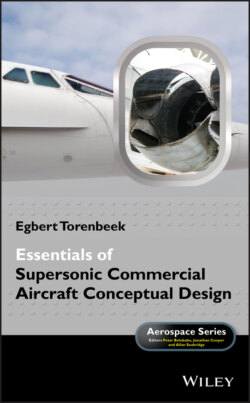Читать книгу Essentials of Supersonic Commercial Aircraft Conceptual Design - Egbert Torenbeek - Страница 18
1.6.2 Requirements and Operations
ОглавлениеArguments in favor of developing and producing a modernized version of the Concorde would not immediately get acclaim from airlines. In the present commercial aviation market its 110 passenger cabin would be too small, its transatlantic design range too short, its fuel economy too low, and its engines too noisy when taking off. Although Concorde's technical complexity made it a very costly aircraft to purchase, its high operating costs were associated primarily with its poor fuel efficiency, high maintenance, and upgrading costs.
A new high‐speed transport aircraft would fly over the Atlantic, the Pacific, and uninhabited areas, covering about 80% of the most attractive long‐range routes where supersonic flight is legally permitted. The size of the market, estimated as being between 500 and 1,000 aircraft, suggests that there will only be room for a single development program and only international cooperation would make such a program feasible. Enabling a potential trip time reduction of 50% or more when compared to current subsonic flights, supersonic air travel is the one technology that offers a large step forward in functional capability and a large increase in service. This increased productivity potential could result in SCT that is economically viable and environmentally acceptable and thereby could capture a significant portion of the long‐range travel market.
Since an SCT will have to comply with the same international regulations as the contemporary subsonic fleets, take‐off performance and engine design must be improved considerably relative to Concorde's capabilities. Cruise speed is a major factor affecting the operating costs and it is the primary performance characteristic that has to be considered in drawing up the top level specifications, and its choice has far‐reaching consequences for the design and development as well as the operation of the aircraft.
The Boeing 2707‐200 was designed to achieve a range of 6,600 km, similar to the trans‐Atlantic routes served by Concorde. Such a maximum range would be of limited interest for the market of a future SCT since the most important part of its market will be the long distances over water, in particular the trans‐Pacific routes with ranges of more than 10,000 km.
The SCT must be able to take‐off from and land on existing airfields and comply with the associated noise criteria applicable to present‐day jetliners and the plane's dimensions must be compatible with the existing infrastructure of the relevant airports. Accordingly, the accessibility to the aircraft must allow for parallel embark and disembark, service, and fueling in order to enable rapid turn‐around.
In order to serve the many routes that have overland legs, subsonic/transonic flight performance must be at least as good as supersonic cruising and the plane should be able to cruise at speeds up to Mach 1.2 without producing an offensive sonic boom, thereby enabling increasing the cruise speed over land by 50% relative to present‐day jetliners.
